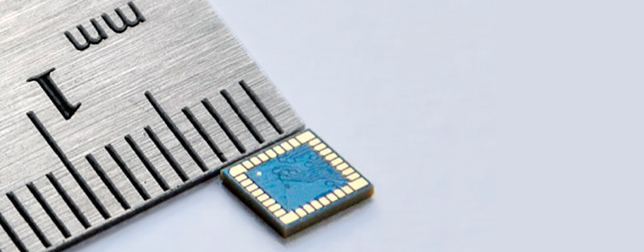George Arnott is the Global GNSS Segment Senior Vice President of Telit Wireless Solutions, the world’s leading provider of high-quality machine-to-machine (M2M) modules and value-added services. He is responsible for developing and implementing Telit’s sales strategy for the global GNSS industry. We had an opportunity to conduct a brief interview with him about Telit’s latest product launch – an extra small GPS receiver.
1. Telit has just launched the GPS module Jupiter SE 880. What is new about it?
The Jupiter SE880 is new in a number of ways. Firstly, its 4.7×4.7mm package makes it the world’s smallest GPS receiver. Receivers are different from chips because they are complete, ready-to-use components. In the case of the SE880, all of the components needed for a fully functioning receiver design are embedded in the small package requiring only two external components to complete the design. This is supplemented by pioneering 148dBm sensitivity. Because of its extreme sensitivity, the 48-channel receiver can reduce cold start Time-to-First-Fix (TTFF) by more than 3 minutes. The third new element introduced for devices in this category is a complex radio noise filtering system. The SE880 has a multi-filter system which includes not only the traditional SAW filters typically found in GPS receiver designs but also a 2.4 GHz notch-filter. The latter is capable of nullifying the jamming effects of high-energy radio devices such as Wi-Fi hot-spots, Bluetooth systems, cordless phones and others, which greatly affect the ability of the GPS receiver to resolve weak satellite signals in the hostile radio environment in which they are required to operate.
2. The extremely small size of the module makes it very interesting for several wearable and portable applications. What do you consider to be the key applications for the device?
A number of applications would benefit from high performance and sensitivity in a small package. Sports watches with high performance tracking capabilities and intelligent sportswear for skiers and hikers with GPS tracking communicating either directly through a cellular m2m module embedded in the garment or via Bluetooth to the owner’s cell phone are typical examples. Portable electronic and personal navigation devices are highly dynamic areas where the SE880 enable entirely new breeds of products.
3. Is the SE 880 the first product to emerge from combined R&D with the recently acquired Navman Wireless OEM Solutions Company?
The SE880 is the anticipated outcome of the merger of two complimentary pools of talent. The market should expect even more exciting products in rapid succession from this joint R&D venture.
4. You say the module stands out from the crowd because of its ultra-low power consumption. Can you give our readers concrete proof of how low the power consumption is?
In its micro-power stand-by mode, the SE880 draws just 14 µAmps from a single cell battery source. This is consistent with the type of energy required to power your average battery-watch mechanism. A good design using clever waking and sleeping modes could allow a wrist-worn device with a watch battery to run for several months before the battery has to be recharged or replaced.
5. What is your favorite Wearable Technologies product?
The Limmex security watch tops our list. This is a very clever design demonstrating the creative flair of Swiss watch makers using the Telit GE865-QUAD sub-compact mechanism and the world’s smallest GSM/GPRS module. It allows the wearer to push a button on the watch to make an emergency mobile phone voice call to a pre-programmed emergency number. This gives an inspiring quality-of-life boost to anyone in need of extra care, such as the elderly, those with physical disabilities, debilitating conditions, recovering from injuries, or simply looking for that extra personal touch in terms of safety and security.












